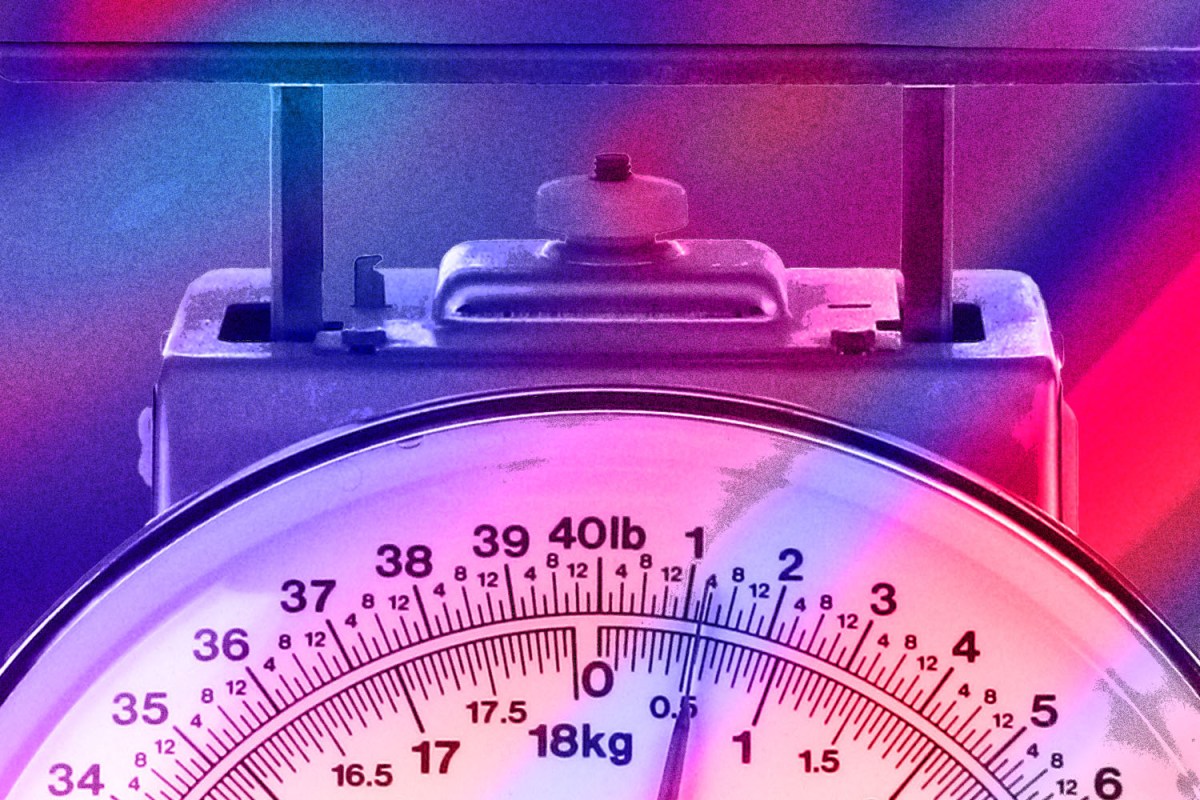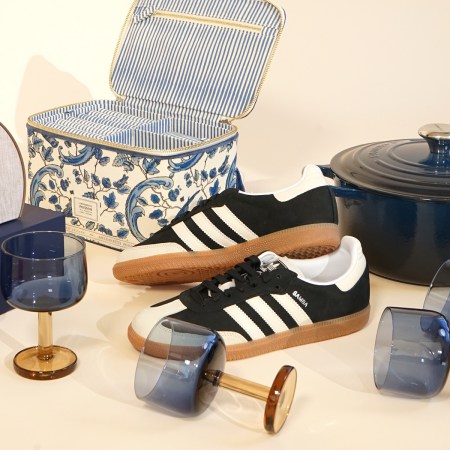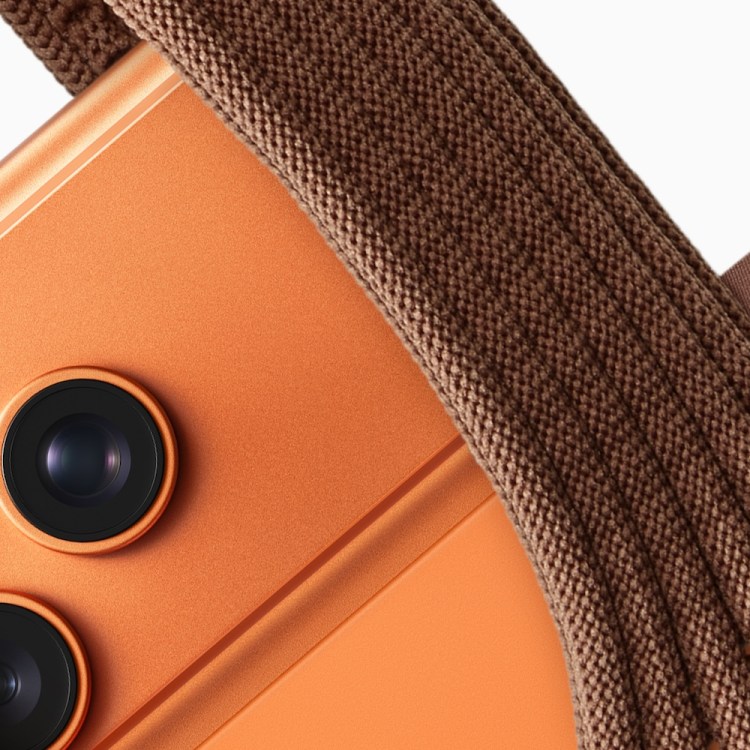There’s a moment in Jurassic Park when the lawyer Donald Gennaro asks the boy Tim where he found his night-vision goggles. “In a box under my seat,” he tells him. “Are they heavy?” Gennaro questions. “Yeah,” the boy replies. “Then they’re expensive. Put them back,” Gennaro tells him.
It’s a smart observation. But the truth is that, in an age in which record-breaking lightness is celebrated — and charged for — we have an ever-more-complicated relationship with the weight of things. In technical products — and especially in any of those we have to lift ourselves, be that a bicycle, a training shoe or a tent — a lack of weight is broadly desirable. A pro-standard tennis racquet today weighs in at around eight ounces, half the weight of the kind used in the heyday of McEnroe and Connors, yet it’s considerably bigger. But in many of the products we surround ourselves with, weight is considered an indicator of quality. It’s the satisfying whump of a car door closing, not the tinny rattle.
This isn’t just something that’s been marketed at us for decades, before materials science — from aluminum through to graphene and the preposterously light aerogel — provided lighter alternatives without an unacceptable pay-off in terms of durability; before new approaches to materials, fabrication and joining allowed cars, for example, to get bigger yet be lighter and so more energy and fuel efficient; before, with the same goal in mind, airliners like the Airbus A380 came to be made of carbon fiber. Not for nothing does Apple call its sleekest laptop line “Air,” or Samsonite name its suitcases “C-Lite,” “D’Lite,” “Spectrolite” and “Lite-Box.” You can see where they’re going.
“Of course, some objects can be too light. A chair, for example, has to have enough weight to be grounded,” notes the industrial designer Ross Lovegrove, among whose super-light products can be counted his Ginkgo carbon-fiber table, a bamboo bicycle for Biomega and, forthcoming, an autonomous vehicle made of composites. He stresses that in design weight is just one parameter in interplay with rigidity, density, volume and many other factors that subtly shape our perception of an object.
“But weight still isn’t thought about enough in design, which generally should be about the reduction of material mass as much as possible,” he adds. “It’s what we see in nature — nature can’t afford to build structures using any more materials than absolutely necessary. The strange thing is that modern lightweight materials like carbon are still so undervalued by consumers but, as our interest in tech and space and so on grows, so will will our appreciation.”
Indeed, slowly, lightness is where manufacturing is heading. According to a 2014 study from the University of East Sarajevo, materials based on iron are stagnating in production and consumption generally, while the likes of magnesium, titanium, alloys, polymers and ceramic composites are increasing — albeit with industry all the while learning to compensate for these materials’ own disadvantages, the likes of lack of thermal resistance, recycling problems, low maximum operating temperatures or, in some instances, the sheer cost.
Lighter weight might also be said to chime with the forces shaping 21st-century lifestyles: the peoples of first-world countries are more mobile than ever, traveling further and more frequently, so now it’s the lighter clothing, footwear, bags and equipment that, counter to the history of consumer goods, command the heavyweight price tag. These people also move home more frequently and live in smaller homes when settled. As such, if once a premium was put on monolithic heirloom furniture, recent years have seen a return to the design philosophy first explored in the 1950s, when similar social conditions prevailed: furniture is getting lighter, so it can be more mobile, not only place to place, but also have multiple functions within a home.
It’s a change of thinking that has invited commentary from the likes of designer Marcel Wanders, whose Balloon Chair is actually made from party balloons filled with compressed air, wrapped in strips of carbon fiber and then hardened with epoxy resin. The result weighs just 800 grams and is the lightest chair to date.
Yet a resistance to the unbearable being of lightness is deeply ingrained in our psyches — as English idiom, with its talk of “weighty matters” and “heavy news” to express seriousness and substance and the likes of “light entertainment” and “lightweight” to suggest frivolity or ineffectiveness, only highlights. The thinking — from a theory called “embodied cognition” — is that we learn from childhood that our interactions with heavier objects require more effort and more planning, and our brain uses these concrete examples when comprehending more abstract concepts like importance. Experience also tells us that heavy things don’t break so easily.
Perhaps this is why a seminal 2007 study at the University of Bangor, UK, underscored the idea that, in many consumer categories weight has a small but unshakable statistical influence on our estimations of value and quality. It may be largely subliminal and very subtle but that sense is no less very real: reduce an empty container by 15% and consumers typically valued its contents at the same as at the original weight; reduce it by 30% however, and suddenly those consumers wanted to pay less for it. Given the choice between a lightweight container and a very lightweight one, consumers were more likely to choose the heavier of the two.
Expectations of weight matter too, the study found: our notion of the perceived value of an item is shaped by how much the product matched our expectation of what it should weigh. The more those expectations are disrupted, the more our value judgement is affected. We expect, for example, heavier bottles of wine to be more expensive and — via another twist in our consumer psychology — hence to be better quality.
Product designers know this. A few years ago, a minor kerfuffle of outrage resulted after an engineer took apart his Beats headphones to find that they contained small metal ingots with no apparent function other than to contribute some 30% of the headphones’ total weight. “Weight makes the product feel solid, durable and valuable,” he noted. But the designer Henry Dreyfus was there before him: in 1939, he spent time in the John Wanamaker department store in New York City watching shoppers pick up the Big Ben alarm clock he’d designed for Westclock and then choose a rival model. Why, he asked them. Because the Big Ben felt too light. So he added a three ounce weight to it, with no function other than to give consumers a sense of substance.
This association between weight and quality crops up in unexpected ways too. One University of Amsterdam study suggests that a topic — or, say, a job resume — will be taken more seriously if the paper it’s presented on comes on a heavier clipboard, while an Oxford University study suggests that, in a psychological process known as “sensation transference,” eating with heavier cutlery actually makes food taste better and makes us willing to pay more for it.
Can this weight/quality association be overcome? In time, yes. Lovegrove argues that lightness will increasingly become a key economic factor — “if we’re dealing increasingly with products that have to migrate the planet” — but also that it will become, more and more, a contemporary cultural factor: we want to feel light.
“It’s why Nike did so well with a product like its Flyknit shoes — which I’ve worn every day for five years now — because you can move so well in them. You can just get on with life,” he argues.
It’s why a product like a quality watch, one of those objects that historically signaled its value by its heft, has also started to play with the idea of being barely-there on the wrist. If many watchmakers still insist on that heft as a prerequisite of the stiffness and sum strength of the parts, four years ago the watchmaker Richard Mille used a composite incorporating graphene to create, at 40 grams including the strap, the world’s lightest high-end mechanical watch to date. That was important not for its technical achievement alone, so much as for what it says about changing perceptions of luxury.
Indeed, according to Benoit Mintiens — a product designer who has turned his hands to strollers, vacuum cleaners and aircraft interiors, among other weight-sensitive products, but who’s best known now as the man behind the pioneering watch brand Ressence — there’s a generational shift coming. If our forefathers saw weight as an indicator of long-lastingness, then our descendants are more likely to equate lightness with modernity, efficiency and, by turns, sustainability — whether a product has been made sustainably or not. Heavier products will, in turn, be associated with pollution, with sluggishness and waste.
“Let’s not forget that making lighter weight products is more complex and requires more engineering, and that doesn’t suit companies concerned about their margins. But in time they’ll start selling lightness as what they’re all about,” reckons Mintiens. “That’s because the future is lighter weight for sure, and as younger generations become ever more attuned to ecological matters as a core value, lightness will be something they look for. It’s lightness that will come to be associated with quality, with favoring heaviness considered a logic of the past.”
This article appeared in an InsideHook newsletter. Sign up for free to get more on travel, wellness, style, drinking, and culture.
























